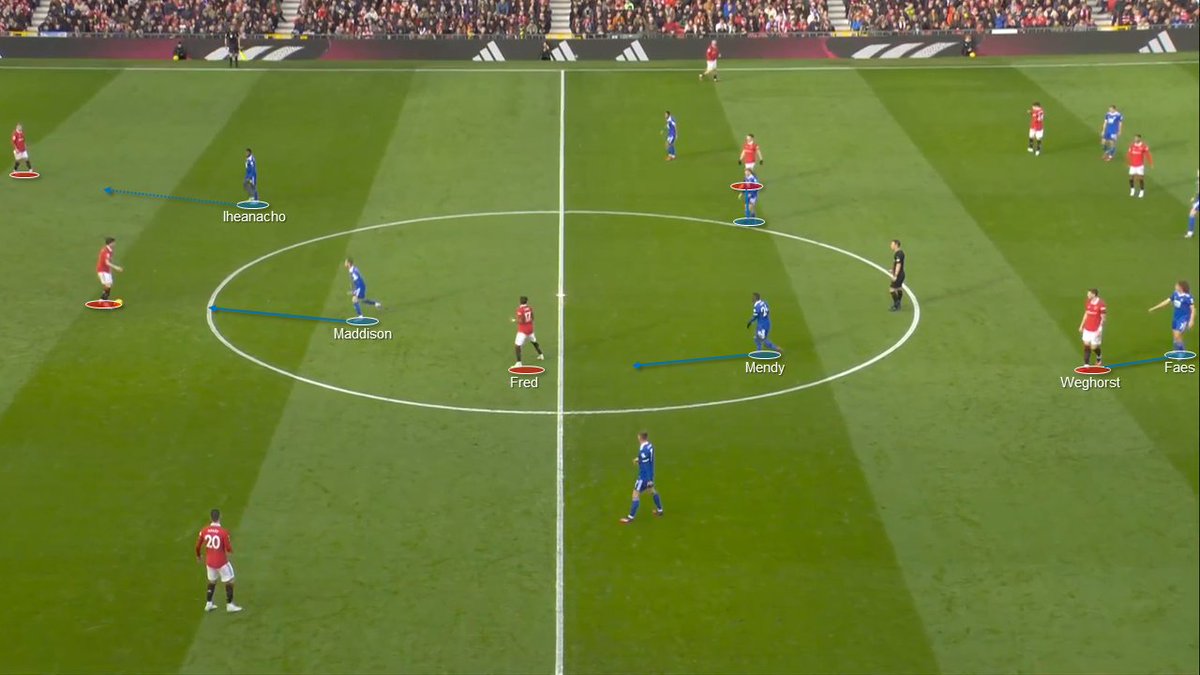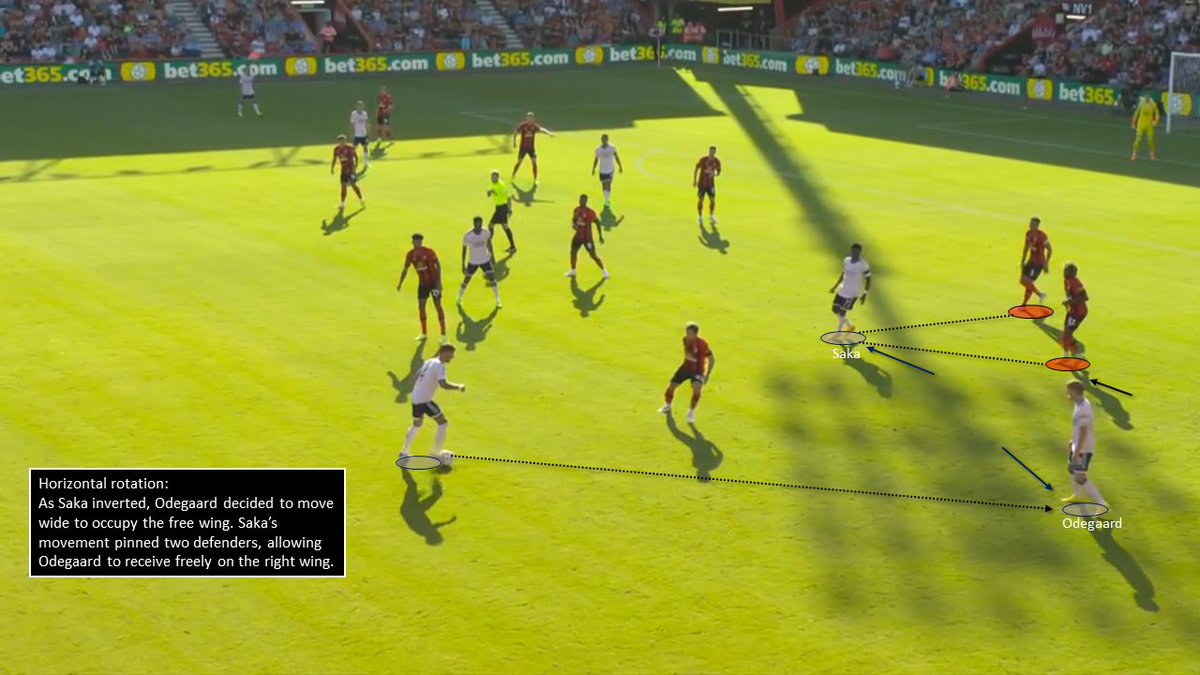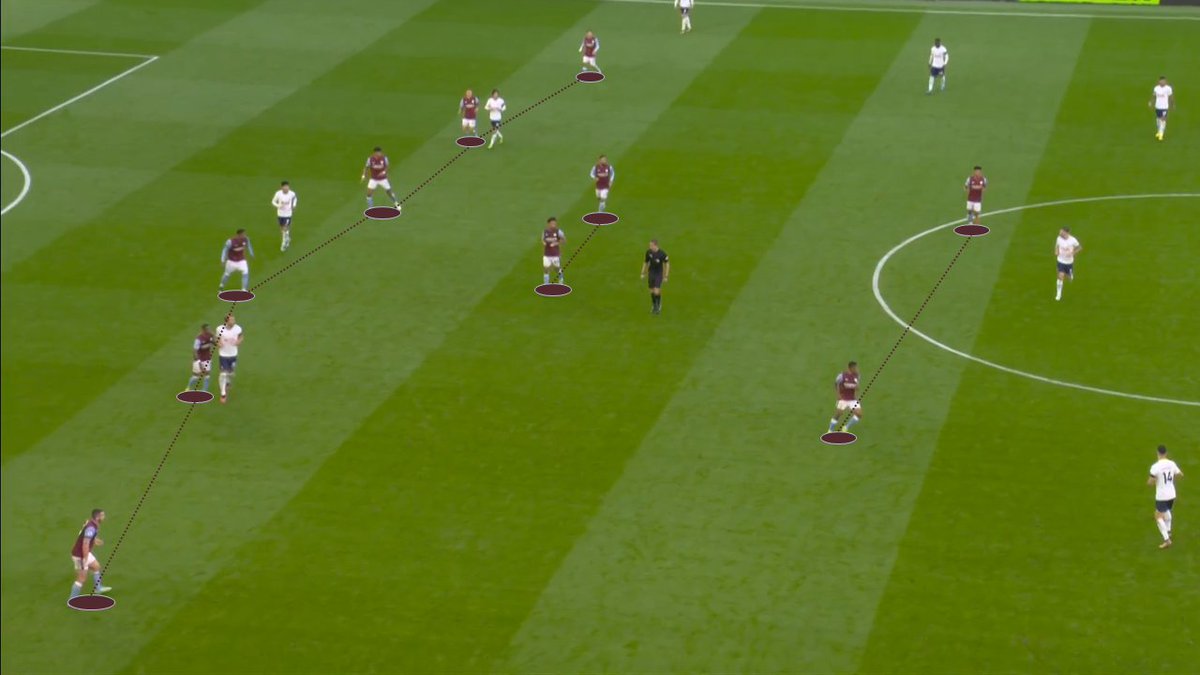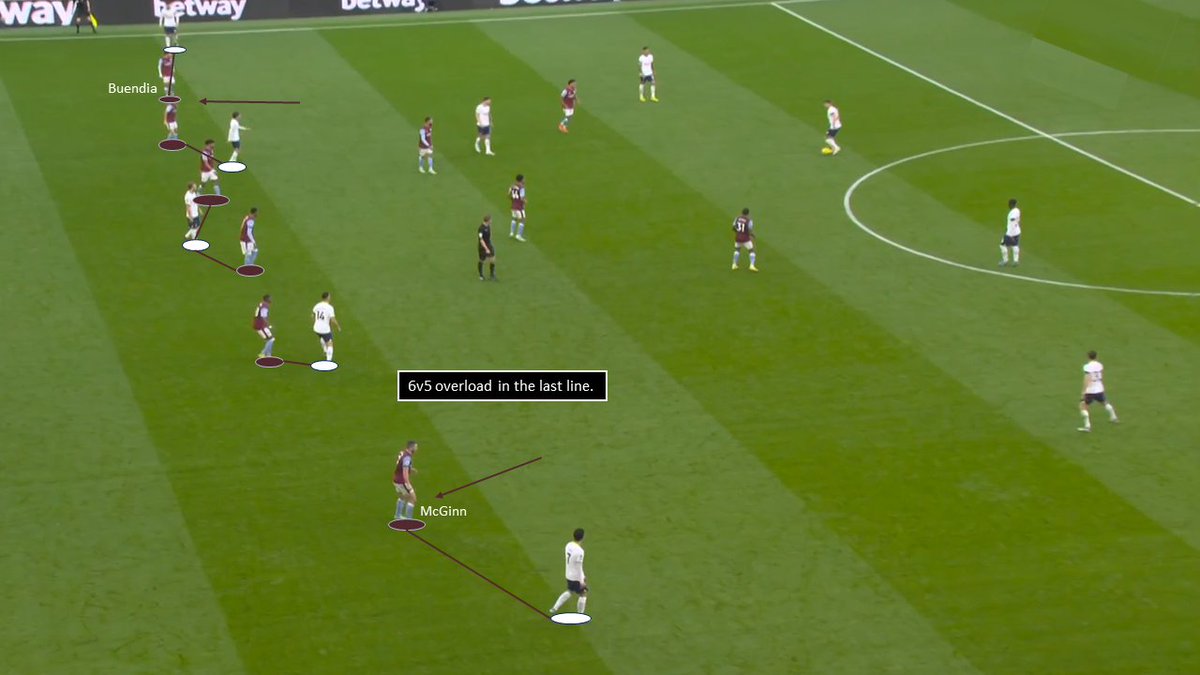Tactical Theory: The concept of the relay player
- different occupations on the field
- strategical benefits
@Sundayshare #SundayShare
[THREAD]
- different occupations on the field
- strategical benefits
@Sundayshare #SundayShare
[THREAD]

The major aim of football is to score goals. To achieve this, the ball needs to move forward and the fastest way to move the ball forward are passes.
However, it's not always possible to move forwards and not always the best way to create chances by passing forward. Sometimes, a team has to (or should) move sideways or even backwards. Therefore, a well-balanced structure is necessary for optimal ball circulation.
Often overlooked at the offensive structure is the concept of the relay player. That's basically a player supporting the ball-carrier with a diagonal back pass option. 

The relay player is very important on every area of the pitch. For the sake of this thread, I'll only examine the strategical advantages of the relay player when the ball is on the wing and in the centre.
When the ball is on the wing, the relay player is positioned in the ball-near half-space. The relay player is especially effective when the in-possession side is stuck in the wing (e.g.: overcrowded wing or lost dynamics). 

The relay player can then be used to get out of the tight situation, acting as a safety option, for example for a winger, who is stuck in a 1v2 situation. 

Furthermore, the relay player can be used as an option to switch the point of attack, creating new dynamics or allowing the in-possession side to exploit spaces on the far (underloaded) side. 







Due to his diagonal positioning in the half-space, it's easier to reach the middle, accessing a player there, or even switching himself. 

However, not only switches can create dynamics again. The back pass to the relay player alone is often enough to move the opponent and create new spaces.
That's because the initial back pass attracts pressure of the opponent, provoking him to move up and opening spaces either in behind or in between the lines. 


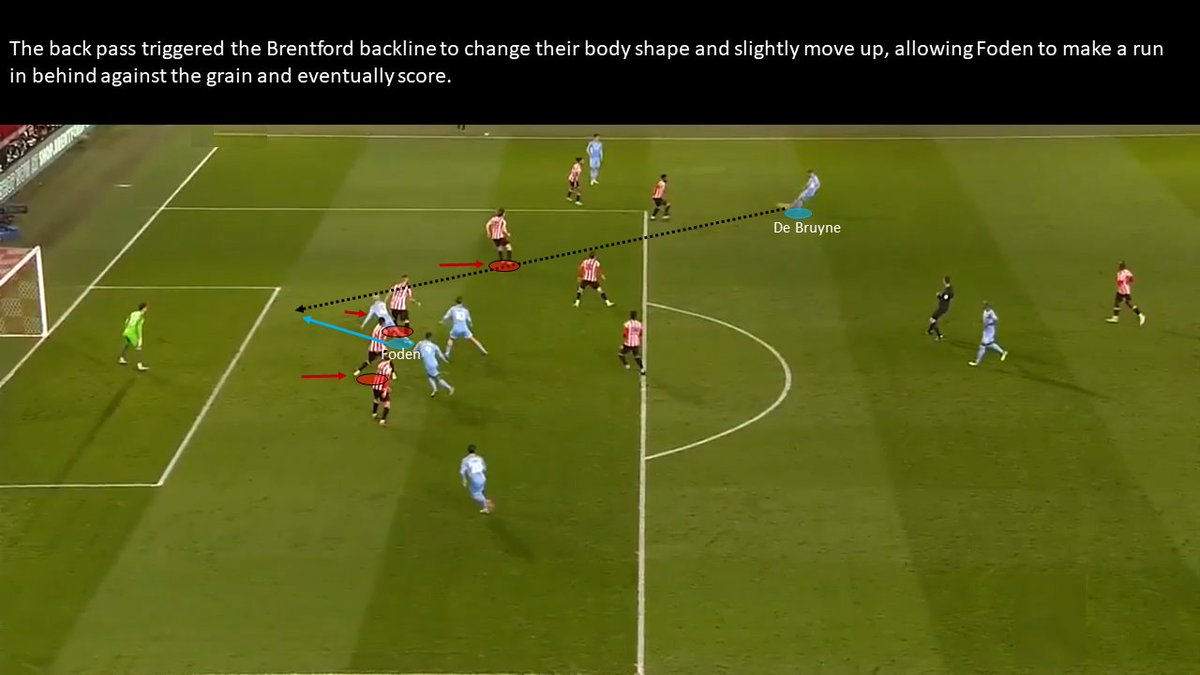
ManCity and Liverpool often use the relay player to move the ball backwards, lure the opponent out of position and immediately exploit the space created against the grain. 







Generally, the relay player is often free, as opponents usually focus on defending spaces in higher zones and the relay player is less of an offensive threat.
However, the relay player can still create a dilemma for the opponent. Especially when players like Alexander-Arnold or Cancelo are positioned there, whose half-space crosses are outstanding.
Opponents then have to decide between leaving the relay player free and defending the wing/depth or sacrificing a player in a deeper position to close down the relay player. Both decisions can be suboptimal for the opponent. 



When the ball is in the centre, two relay players positioned diagonally deeper are possible, creating more unpredictability in the attack. Supporting a player with a backwards-facing view in the centre and providing back pass/safety options are key in possession. 

A relay player receiving in higher zones with a forwards-facing view can be very valuable for the in-possession side. The positive view allows him to choose between various options to progress further up, which in turn also makes him more difficult to defend.
Relay players in the centre can often be incorporated in combinations like an up-back-through pattern or a 3rd man combination. 





Players positioned on various horizontal and vertical lines create a more solid structure for counterpressing. This structure automatically occurs when keeping the concept of the relay player in mind.
Conclusion:
The relay player offers a lot of advantages for every in-possession side and is more than just a safety option, which should definitely be used deliberately with keeping the benefits in mind.
The relay player offers a lot of advantages for every in-possession side and is more than just a safety option, which should definitely be used deliberately with keeping the benefits in mind.
I can recommend you this video analysis by @CarlonCarpenter, which is about the relay player and mentions some of the things I've written above:
https://twitter.com/CarlonCarpenter/status/1506281302919725067?t=AffxMnW26RNAROKIoanEKQ&s=19
I hope you enjoyed this thread! Feedback is appreciated in any form whatsoever!
• • •
Missing some Tweet in this thread? You can try to
force a refresh
























